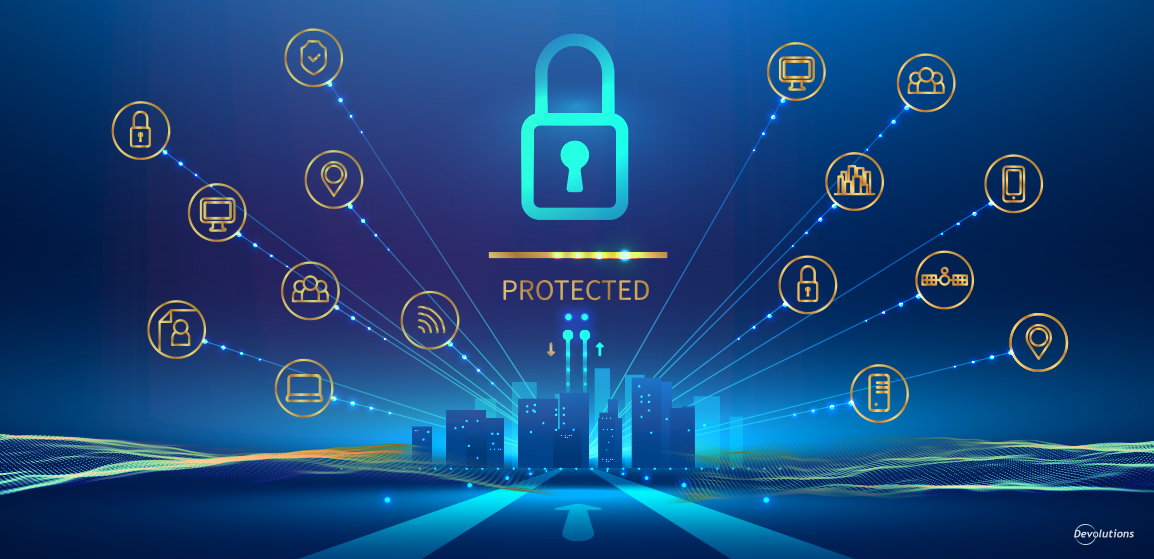Privileged Access Management
Privileged accounts and the access they provide represent the largest security vulnerability an organization faces today. These powerful accounts exist in every piece of hardware and software on a network.
When employed properly, privileged accounts are used to maintain systems, facilitate automated processes, safeguard sensitive information, and ensure business continuity.
But in the wrong hands, these accounts can be used to steal sensitive data and cause irreparable damage.
Privileged access is exploited in nearly every cyber-attack; to disable security systems, to take control of critical IT infrastructure, and to gain access to confidential business data and personal information.

Why do you need
Privileged Access Management?
In today’s organizations, Privileged Access is a much broader topic than simply Vaulting credentials and expands to, as an example, securing automated processes, controlling remote user access, and supporting digital transformation strategies.
Organizations hence seek an efficient Privileged Access Management (PAM) technology to manage and govern privileged identities more effectively.
Protecting privileged access in Financial Services
Securing and managing privileged access should be an integral part of any financial organization’s strategy in achieving PCI DSS and SWIFT CSCF compliance. Privileged credentials are almost always the initial target after a network perimeter has become compromised. In the wrong hands, privileged accounts enable attackers to disable an organizations security controls, steal confidential information, disrupt business operations, and most importantly, commit financial fraud as we have seen in previous attacks. Organizations using critical systems such as SWIFT and other core banking applications need to proactively implement controls to protect against, detect and respond to cyber-attacks to not only comply with this regulation, but to also avoid costly breaches. With the necessary privileged access security solution in place, financial institutions can effectively and efficiently secure privileged accounts across all IT systems improving their overall security posture.
Our solutions provide the necessary security controls to help support the self-attestation requirements in securing the organizations environment, knowing “who” and “what” has access to critical banking systems and applications, and detecting and responding to high-risk activity in operator sessions.
Protecting privilege in Local and State Government
The rise in ransomware resulting in data breaches of the IT infrastructure is becoming a daily occurrence. The unauthorized access of traditional network security perimeters of state and local governments, law enforcement agencies, and transportation target the core of the citizen’s daily life. These breaks in security have one thing in common; they are low-hanging fruit for hackers. In fact, state and local governments have become one of the most targeted public sectors for data breaches, yet they have the least amount of funding and resources to protect themselves from cyberattacks.
Phishing, ransomware, malware, insider threats and more challenge state and local governments more and more every day.
At the same time, municipalities face a lack of qualified cybersecurity staffing and budget constraints, legacy IT infrastructure and workforce changes wrought by the pandemic in addition to modernizing their environment with digital transformation. Each endpoint and application connection creates a potentially harmful entry point into the municipalities’ most sensitive data. As the perimeter expands, risks increase, and traditional security methods are no longer enough. Management of
privileges, trust, and identities in these dynamic environments is the key to successfully enabling innovation, supporting a mobile workforce, and ensuring the protection that state and local government employees, as well as the citizens, expect.
Ours Identity Security Platform is built on the pillars of management for Access, Privilege, and DevSecOps to deliver authentication, authorization, access, and audit in an integrated, seamless manner, enabling security at every step in the Identity Security lifecycle. Our intelligent approach balances the need for better security with end user productivity. The solutions leverage real-time intelligence and analytics to create a context-based, adaptive approach to the Identity Security lifecycle for all identities, across all systems and apps, using any device. To mitigate the risk of a security breach, state and local governments need to adopt a security solution with consistent controls that specifically address their privileged access management (PAM) exposure.
Protecting privilege in Health Care
As hospitals and healthcare ecosystems continue to grow and complexity, providers face ever-increasing challenges in protecting highly targeted of electronic Personal Health Information (ePHI). Interoperability or the sharing of electronic Personal Health Information, ePHI would not be possible without the use of privileged credentials. For this reason and others, industry experts recommend protecting privileged access to mitigate risks.
It is among top five CIS basic controls. According to Gartner, privileged account management was identified as the No.1 security project in 2018-2019 for CISOs. Managing access to privileged credentials, accounts and secrets is an effective way to limit the moves an intruder can make after a breach. With proper privileged access security measures in place, an attacker’s ability moves freely throughout a network to access sensitive systems will be contained.
Our solution provides proactive, automated, end-to-end detection and protection for all privileged accounts that have access to systems containing ePHI, along with complete compliance and audit trails. The comprehensive Privileged Access Security Solution enables IT teams, while easily accommodating innovation and expansion to safeguard your position as a leading provider of quality care.
Request more details below..

